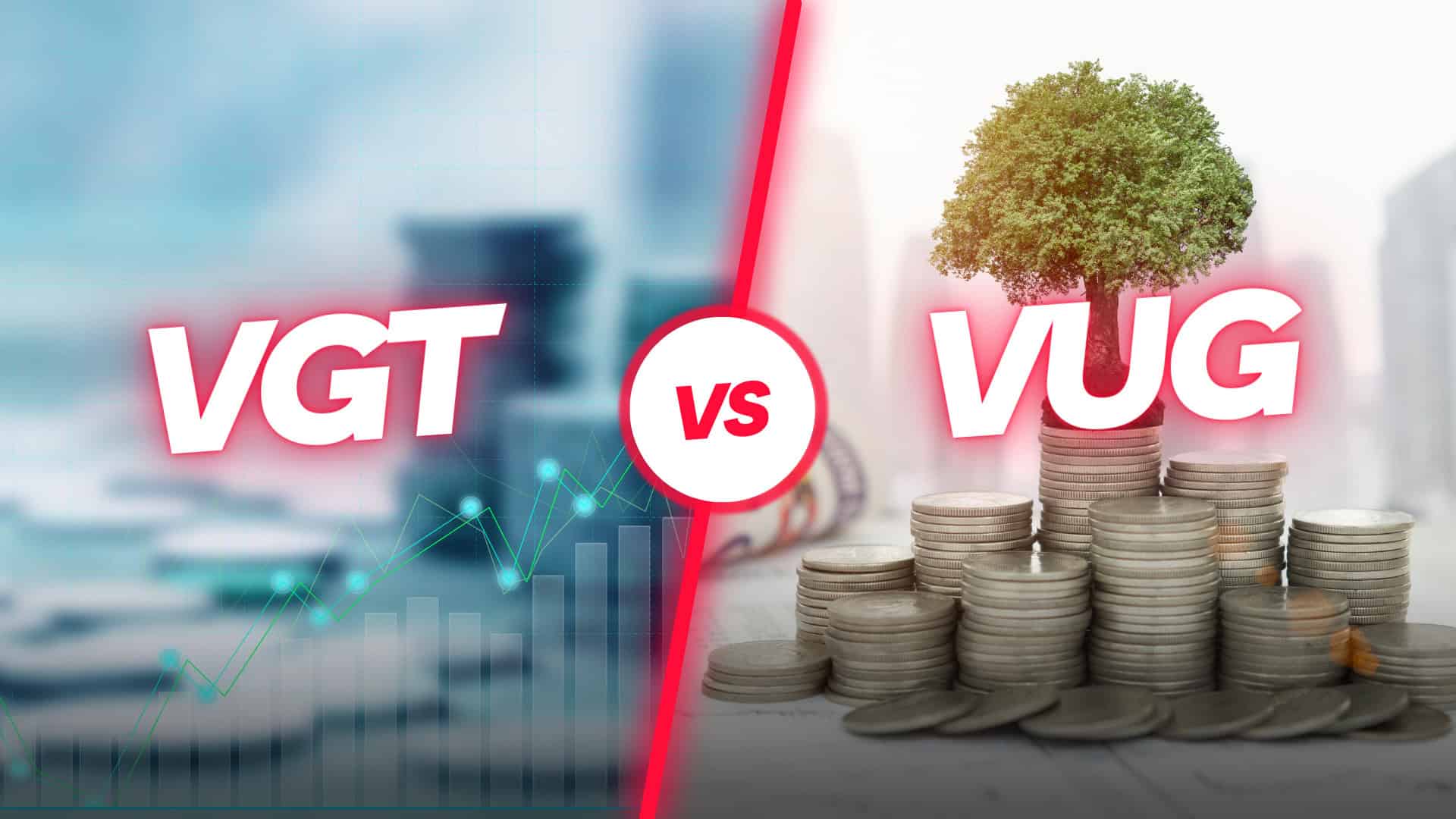
Vanguard has long been the golden standard for low-cost ETFs that deliver exceptional long-term returns. Investors can choose from many Vanguard ETFs, but few of them are compared to VGT and VUG.
Both of these funds track large tech companies, but they have some key differences. VGT and VUG have both delivered solid long-term returns, but if you could only choose one, which one would make more sense for your portfolio? We’ll dive into portfolio allocations, long-term returns, and other factors to determine which Vanguard ETF has more upside.
VGT and VUG are two of the top-performing Vanguard ETFs that have delivered steady long-term returns. VGT’s outsized tech exposure has helped it outperform VUG over the long run, but VUG is the less risky option. 4 million Americans are set to retire this year. If you want to join them, click here now to see if you’re behind, or ahead. It only takes a minute. (Sponsor)
Key Points
Long-Term Returns

VUG and VGT both have impressive long-term returns, but VGT is the clear winner. While VUG has an annualized 3-year return of 12.0% and an annualized 10-year return of 16.1%, VGT has annualized returns of 17.1% and 21.2% during those time frames, respectively.
VUG has a lower expense ratio, but it’s too small of a difference to heavily consider in your analysis. VUG has a 0.04% expense ratio, while VGT has a 0.10% expense ratio. These low expense ratios further demonstrate that you can find some of the best low-cost ETFs with Vanguard.
Portfolio Allocation
Both of these funds place a big emphasis on tech stocks, but VGT goes to the extreme with this one. VGT allocates 99.3% of its total assets into tech stocks, while VUG puts 51.6% of its assets into tech. The heavy focus on tech stocks has helped VGT outperform VUG, but it has also resulted in more volatility. VGT is likely to underperform VUG if the stock market enters a correction.
Both funds have Apple (NASDAQ:AAPL), Nvidia (NASDAQ:NVDA), and Microsoft (NASDAQ:MSFT) as their top three holdings. However, the concentrations are different. These three stocks make up roughly 45% of VGT’s total assets compared to 35.5% of VUG’s total positions. Investors who believe in Apple, Nvidia, and Microsoft may want to prioritize VGT over VUG.
While VGT is all-or-nothing with tech stocks, VUG is a more diversified Vanguard ETF that allocates its capital into multiple sectors. Both funds prioritize large-cap companies.
The Importance of Portfolio Diversification
A diversified portfolio allows investors to minimize their risk. The idea is that if one stock performs poorly, other stocks can pick up the slack. Furthermore, investing in multiple companies allows you to capitalize on more opportunities.
The importance of portfolio diversification explains why mutual funds and ETFs continue to gain traction. Investors don’t have to do as much research and portfolio management to have exposure to dozens or even hundreds of companies.
However, it’s still important to check an ETF’s holdings and assess its portfolio diversification. VGT has 316 holdings, but an exclusive focus on the tech sector doesn’t leave much diversification. VGT diversifies investors in the tech sector but doesn’t offer broader diversification.
Meanwhile, VUG is still top-heavy with tech stocks but makes a point of spreading its capital across multiple industries. When tech stocks slow down, some of VUG’s non-tech holdings can minimize the total losses.
What to Consider Before Investing in a Vanguard ETF

Investing in a Vanguard ETF like VGT or VUG can move you closer to your long-term financial goals. It’s good to consider a few factors before investing in any ETF, but some parameters specifically apply to these two ETFs.
The first thing to consider is tech trends. A booming tech sector will allow VGT to expand its lead over VUG. Artificial intelligence is the biggest tailwind in tech, and continued investments in that opportunity can lead to outsized returns for VGT investors.
However, high returns aren’t the only factor to consider. Investors must also assess their risk tolerance. Some investors are approaching their retirement years and don’t want to incur as much risk or volatility. VUG offers a more diversified portfolio and is less risky. Younger investors who won’t retire for multiple decades have more time to wait out corrections and may gravitate toward riskier ETFs like VGT that offer higher potential returns.
Take Charge of Your Retirement In Just A Few Minutes (Sponsor)
Retirement planning doesn’t have to feel overwhelming. The key is finding expert guidance—and SmartAsset’s simple quiz makes it easier than ever for you to connect with a vetted financial advisor.
Here’s how it works:
- Answer a Few Simple Questions. Tell us a bit about your goals and preferences—it only takes a few minutes!
- Get Matched with Vetted Advisors Our smart tool matches you with up to three pre-screened, vetted advisors who serve your area and are held to a fiduciary standard to act in your best interests. Click here to begin
- Choose Your Fit Review their profiles, schedule an introductory call (or meet in person), and select the advisor who feel is right for you.
Why wait? Start building the retirement you’ve always dreamed of. Click here to get started today!
Thank you for reading! Have some feedback for us?
Contact the 24/7 Wall St. editorial team.






